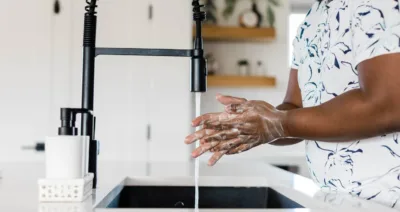When you become a homeowner and get the keys to your beautiful home, you don’t think about the plumbing issues you’ll encounter in the coming years. You may see yourself lounging poolside in the backyard or hosting Thanksgiving around the dinner table but don’t think of the times you’ll struggle to unclog the kitchen sink or stand ankle-deep in toilet water after it starts overflowing.
Fortunately, most major problems can be prevented with attentiveness and early action. Knowing the key signs of a plumbing issue can help you spot the problem and act quickly to ensure you can live out your Leave It to Beaver daydreams while residing in your home.
- Stopping Problems Before They Escalate
One of the top ways to prepare for plumbing issues is to stop them before they happen. It’s important to regularly inspect pipes on your own, taking note of more minor problems such as dripping or corrosion.
Fixtures for toilets, sinks, and appliances may occasionally need replacement parts to stop leakage. Leaking from unseen pipes might be spotted in the form of stains, rusty water, warped flooring, or musty smells, creating a scene right out of your favorite horror film. If you suspect a leak, you can also try shutting off all faucets and water-related appliances for 30 minutes, checking to see if your water meter changes in that time.
To prevent clogs, be mindful of how you use your drains. Don’t pour fats or oils down the kitchen sink because they’ll eventually solidify and cause a backup. Avoid flushing larger items like cotton balls or wads of hair down the toilet. Although flushable wipes are labeled “flushable” and feel oh-so soothing on the skin, they don’t break down in your pipes. Few things are as embarrassing as seeing your plumber pull out a string of used flushable wipes from your pipes.
- Signs of a Major Issue
If prevention doesn’t work, you may wonder if it’s time to call a plumber. Assess the situation, but when in doubt, don’t be afraid to act. Because supply lines are pressurized, a minor issue in the wrong place can quickly become a big problem that ruins your plans for the day (there goes Sunday Night Football).
There are a few key details to look out for if you think you might have a problem needing plumbing repair. Look for discolored pipes, and watch for sewer smells or discolored water. An overly green patch in your yard can signal a sewer leak, even if you enjoy how much your new lush grass boosts your home’s curb appeal.
Low water pressure in multiple locations can signify problems in the water main, water heater, or even a supply line leak. As with the meter test, if your water bill has increased significantly, there could be a plumbing issue.
A wobbly toilet is one of the more unexpected signs of a major problem. This can often be a benign issue, but water can begin to seep into your flooring if the wax seal around the drain fails.
If you have a slow drain, it’s likely the result of a clog. Although you can attempt to remove a clog, the task is better left to a professional. Debris inside pipes can extend farther than you expect, and you may not have the right tools or equipment to dislodge the gunk. In addition, it’s best to avoid chemical drain cleaners, which can be challenging to work with and cause damage to your pipes.
- Getting Help With Your Home’s Plumbing
You may be able to fix several plumbing issues on your own. Many problems can be avoided by taking precautions and performing regular maintenance. However, you’ll need to take action when problems escalate to prevent a costly plumbing repair.
Hire a plumber if you suspect that you may have a plumbing issue in your home, don’t wait until an emergency plumber is needed. A professional near you can help diagnose the problem and take action to restore the function of your plumbing system.


